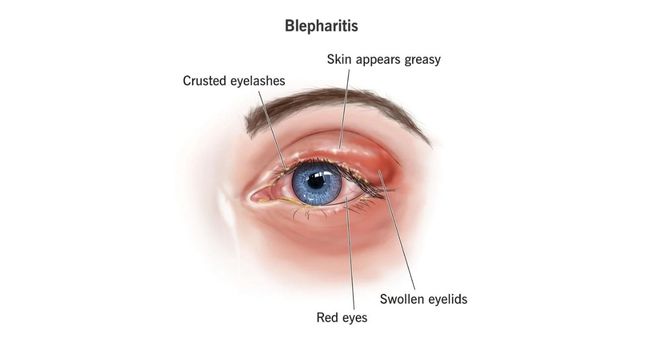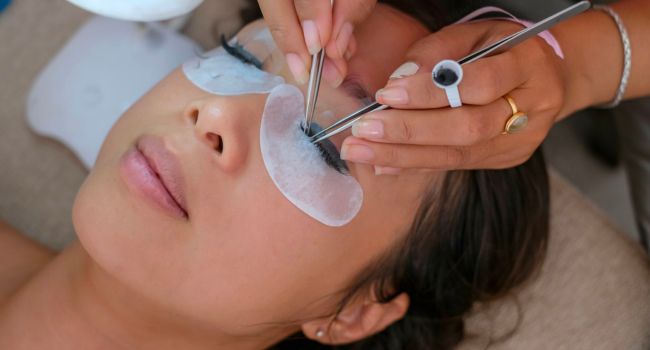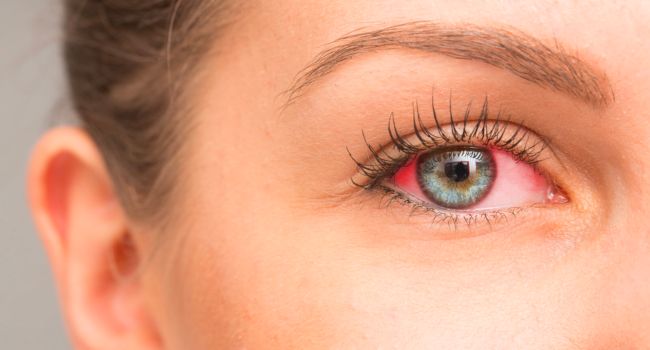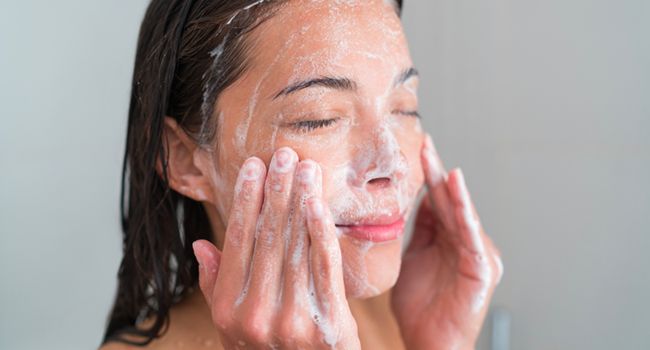In the enchanting realm of beauty, lash extensions have become the modern muse, offering a gateway to alluring, expressive eyes that mesmerize. However, amidst the fluttering glamour, there’s an unspoken concern that deserves our attention: “Blepharitis from eyelash extensions“ In this comprehensive article, we delve deep into the world of blepharitis, unraveling its intricate causes, identifying its telltale symptoms, and discovering the pathways to treating blepharitis with lash extensions. Lash extensions have transformed the way we perceive and present ourselves. Through the meticulous attachment of synthetic lashes to natural ones, a mesmerizing transformation takes place. The end result? Eyes that exude mystique, allure, and an undeniable charm that captivates with every flutter.

The Uninvited Guest: Blepharitis from Eyelash Extensions
While lash extensions promise enchantment, they can potentially introduce you to an uninvited guest: blepharitis. This condition adds a layer of complexity to the world of lash extensions. Blepharitis, when associated with lash extensions, refers to an inflammation of the eyelids that can occur as a potential consequence of the lash enhancement process. A specific manifestation known as anterior blepharitis emerges due to the proliferation of bacteria. While everyone harbors some bacteria at the base of their eyelashes, certain individuals experience an excess of these microorganisms, paving the way for potential infection and resultant inflammation. Posterior blepharitis, on the other hand, arises from the obstruction of oil glands, a condition termed meibomian gland dysfunction. Those afflicted with conditions like rosacea and dandruff are more predisposed to experiencing this form of blepharitis.

Lash extensions, though a remarkable beauty trend, introduce the risk of this eye condition due to various factors such as compromised hygiene during application, the weight of extensions, or even allergic reactions to adhesive. This condition disrupts the balance of your eye’s well-being and the pursuit of glamorous eyes, manifesting as discomfort, redness, swelling, and even crusty deposits along the lash line. Understanding blepharitis from lash extensions is essential to maintaining both the allure of enhanced lashes and the overall health of your eyes.
Tracing The Roots: Can Eyelash Extensions Cause Blepharitis?
Yes, unfortunately for lash extension lovers out there, they can. However, understanding the root causes of blepharitis after lash extensions will make it easier to manage and prevent the condition.

- Hygiene: The process of applying lash extensions is a delicate art that demands meticulous hygiene. If hygiene standards are compromised during this process, it can inadvertently introduce bacteria, creating an environment conducive to the development of blepharitis.
- Weight: Lash extensions, particularly those that are lengthy or excessively heavy, can place strain on your natural lashes. This additional burden can lead to lash breakage and create conditions favorable for blepharitis to thrive.
- Allergic Reactions: The adhesive used in lash extensions can sometimes trigger allergic reactions. For those sensitive to such compounds, this reaction can manifest as redness, itching, and eyelid inflammation.
>> Stay informed on allergic reactions! Our guide offers practical tips for handling symptoms effectively: Lash Glue Allergy: Causes And Treatments
Decoding the Symptoms
Blepharitis manifests through various symptoms, the severity of which can vary from person to person:

- Eye Irritation: Blepharitis doesn’t shy away from making its presence known. If you find yourself constantly uncomfortable and experiencing irritation, consider it a preliminary signal of a larger conversation your eyes are having with the condition.
- Redness and Swelling: Inflammation is a characteristic hallmark of blepharitis. Inflamed eyelids may appear red, swollen, and puffy, potentially overshadowing the allure of your lash extensions.
- Crusty Eyelids: Imagine waking up to find that your enchanting lash extensions have a less-than-glamorous companion – crusty debris. This unwelcome presence can interrupt the seamless beauty of your lash line.
- Excessive Tear Production: Blepharitis can also lead to watery eyes as a protective response to the eye’s discomfort and dryness.
- Sensitivity to Light: Photophobia, or sensitivity to light, can develop as a result of the inflammation affecting the eye’s surface.
- Blurry Vision: When the inflammation extends to the cornea, it can cause temporary changes in vision, including blurriness.
>> Read more: Eyelash Mites: What Are They? Causes, Symptoms, and Treatment
How To Treat Blepharitis From Eyelash Extensions

- Hygiene Priorities: Elevate the significance of hygiene during the lash extension application process. Opt for reputable salons that emphasize cleanliness and maintain stringent hygiene protocols.
- Weight Considerations: Opt for lash extensions that strike a balance in terms of weight. Effective communication with your lash artist is crucial to ensure the added weight doesn’t compromise the health of your natural lashes.
- Allergic Precautions: If you have a history of allergies, request a patch test before undergoing lash extension application. This preliminary step helps anticipate potential allergic reactions.
- Cleansing Rituals: Embrace a gentle eyelid cleansing routine using products that are friendly to both your extensions and natural lashes. Consistent cleansing prevents the buildup of bacteria, a common contributor to blepharitis.
- Expert Insight: Regular appointments with an eye care professional are indispensable. These appointments allow for vigilant monitoring of lash health and eyelid conditions, facilitating early detection and intervention.
- Allergy Management: If you suspect an allergic reaction to the adhesive used in lash extensions, discontinue use and consult a professional for tailored advice.
Frequently Asked Questions (FAQs)
Who is more susceptible to blepharitis from lash extensions?
Individuals wearing contact lenses, experiencing eye allergies (allergic conjunctivitis), having conditions like rosacea or dandruff, or ignoring proper hygiene during lash extension application are at higher risk of developing blepharitis.
Can blepharitis from lash extensions lead to more serious eye conditions?
Yes, untreated blepharitis can escalate and potentially contribute to more severe eye conditions, such as dry eye disease. The chronic discomfort and inflammation associated with blepharitis can impact tear stability, leading to more significant eye health issues over time.
What is the connection between blepharitis and dry eye disease?
Blepharitis is a leading cause of dry eye disease. The persistent inflammation and unstable tears linked to blepharitis can contribute to dry eye disease’s development and progression. This condition involves severe discomfort and may impact daily life, potentially leading to mental health concerns.
Who is more susceptible to blepharitis from lash extensions?
Individuals wearing contact lenses, experiencing eye allergies (allergic conjunctivitis), having conditions like rosacea or dandruff, or ignoring proper hygiene during lash extension application are at higher risk of developing blepharitis.
Can blepharitis from lash extensions lead to more serious eye conditions?
Yes, untreated blepharitis can escalate and potentially contribute to more severe eye conditions, such as dry eye disease. The chronic discomfort and inflammation associated with blepharitis can impact tear stability, leading to more significant eye health issues over time.
What is the connection between blepharitis and dry eye disease?
Blepharitis is a leading cause of dry eye disease. The persistent inflammation and unstable tears linked to blepharitis can contribute to dry eye disease’s development and progression. This condition involves severe discomfort and may impact daily life, potentially leading to mental health concerns.

 +84 862 765 053
+84 862 765 053